How to Start a Daily Drawing Habit
Are you ready to unleash your inner artist? Starting a daily drawing habit might just be the key to unlocking your creativity and honing your skills. Imagine picking up a pencil or brush each day, letting your imagination flow onto the page. Sounds exciting, right? But where do you begin? In this article, we'll explore actionable steps and tips that will not only help you cultivate this habit but also enhance your artistic abilities over time. Whether you’re a beginner or a seasoned artist looking to reignite your passion, these strategies will guide you toward making drawing a delightful part of your daily routine.
Why is daily drawing so crucial? Well, think of it as a workout for your creativity. Just like lifting weights builds muscle, drawing daily strengthens your artistic skills. It fosters creativity, improves your ability to observe, and builds discipline. Each stroke of your pencil is a step toward becoming a better artist. By recognizing its significance, you can find the motivation to integrate this practice into your routine consistently. Imagine the joy of seeing your progress over weeks and months; it's like watching a plant grow from a seed into a flourishing tree!
Now that you understand the importance, let’s talk about setting realistic goals. Establishing achievable goals is crucial for maintaining motivation. Think of your goals as the compass that guides your artistic journey. Setting daily, weekly, or monthly drawing targets can help you track progress and stay focused on improvement. For instance, instead of saying, "I want to draw better," you might set a goal like, "I will complete one drawing every day for the next week." This clarity can make all the difference!
Differentiating between short-term and long-term goals can provide clarity. Short-term goals focus on daily practice, while long-term goals may include mastering specific techniques or styles. Short-term goals are like the stepping stones on your path, while long-term goals are the destination. Here’s how you might think about them:
- Short-term Goals: Commit to a 10-minute daily sketch or complete a drawing challenge.
- Long-term Goals: Create a portfolio, participate in exhibitions, or develop a unique artistic style.
Examples include committing to a 10-minute daily sketch or completing a drawing challenge. These small, manageable tasks can lead to substantial growth over time. Think of them as the daily vitamins for your artistic health. Just a little bit each day can lead to impressive results!
Long-term goals might involve creating a portfolio, participating in exhibitions, or developing a unique artistic style. These aspirations can guide your daily practice. They serve as a lighthouse, helping you navigate through the sometimes foggy waters of artistic development.
Next, let’s talk about your environment. A dedicated drawing space can enhance focus and creativity. Imagine a cozy nook filled with your favorite supplies, inspiring artwork, and natural light streaming in. Organizing a comfortable, inspiring environment encourages consistency in your daily drawing practice. It’s like creating a sanctuary for your creativity. Set up a space where you feel energized and motivated to draw every day.
Integrating drawing into your daily routine can be achieved through scheduling or spontaneous practice. Finding the right time that suits your lifestyle is essential for consistency. Perhaps you’re a morning person who enjoys sketching with a cup of coffee or a night owl who finds inspiration under the stars. Whatever your preference, make it a priority!
Identifying when you feel most creative helps determine the best time for drawing. Morning, afternoon, or evening sessions can be tailored to your personal preferences. Think of it like catching the perfect wave; you want to ride it at the right moment for the best experience!
Utilizing reminders, apps, or drawing prompts can keep you accountable. These tools can help you stay on track and make drawing a regular part of your day. Consider using an app that sends you daily reminders or following a drawing prompt challenge online. They can be the nudge you need to pick up that pencil and start creating!
- How long should I draw each day? Aim for at least 10-15 minutes, but feel free to draw longer if you’re inspired!
- What materials do I need to start? Start with basic materials like a sketchbook and pencils. You can always expand your toolkit later!
- What if I miss a day? Don’t stress! Just pick up where you left off. Consistency is key, but it’s okay to have off days.
- Can I draw anything? Absolutely! Draw whatever inspires you, whether it’s objects around you, people, or abstract concepts.

Understanding the Importance of Daily Drawing
Daily drawing is not just about putting pencil to paper; it's a transformative practice that can significantly enhance your creativity and artistic skills. Think of it as a workout for your brain and hands. Just like lifting weights builds muscle, daily drawing strengthens your artistic abilities. When you draw every day, you’re not only honing your skills but also unlocking new levels of creativity that you might not have known existed within you.
Imagine waking up each morning with a fresh canvas, ready to explore your thoughts and ideas through art. This daily practice fosters a sense of discipline and commitment, which are crucial for any artist. By dedicating time each day to drawing, you cultivate a routine that encourages exploration and experimentation. It’s like planting seeds in a garden; with consistent care and attention, those seeds will grow into beautiful blooms over time.
Moreover, daily drawing serves as a powerful tool for self-expression. It allows you to communicate your emotions, thoughts, and experiences visually. Whether you’re feeling joyful, anxious, or contemplative, translating those feelings into art can be incredibly cathartic. This practice not only helps you understand yourself better but also connects you with others who may resonate with your work.
To emphasize the significance of daily drawing, consider these benefits:
- Enhanced Skill Development: The more you draw, the better you become. Regular practice helps you refine your techniques and experiment with different styles.
- Increased Creativity: Engaging in daily drawing stimulates your imagination and encourages you to think outside the box.
- Stress Relief: Drawing can be a meditative practice, helping to alleviate stress and promote relaxation.
- Building a Portfolio: Over time, your daily drawings can contribute to a diverse and impressive portfolio, showcasing your growth as an artist.
Additionally, daily drawing can help you develop your unique artistic voice. As you experiment with various techniques and styles, you’ll begin to discover what resonates with you. This exploration is essential for any artist looking to carve out their niche in the vast world of art. By committing to a daily practice, you're giving yourself the freedom to play and innovate without the pressure of perfection.
In summary, understanding the importance of daily drawing is the first step toward integrating this enriching practice into your life. It’s about more than just improving your skills; it’s a journey of self-discovery, creativity, and personal growth. So, grab your sketchbook and start your daily drawing adventure today!
Q: How long should I draw each day?
A: Even 10 to 15 minutes can be incredibly beneficial. The key is consistency, so find a duration that fits your schedule and stick to it.
Q: What should I draw?
A: Draw anything that inspires you! This could be objects around your home, scenes from nature, or even abstract concepts. The goal is to keep your creativity flowing.
Q: What if I miss a day?
A: Don’t stress! It’s normal to miss a day here and there. Just get back to it the next day and keep moving forward.
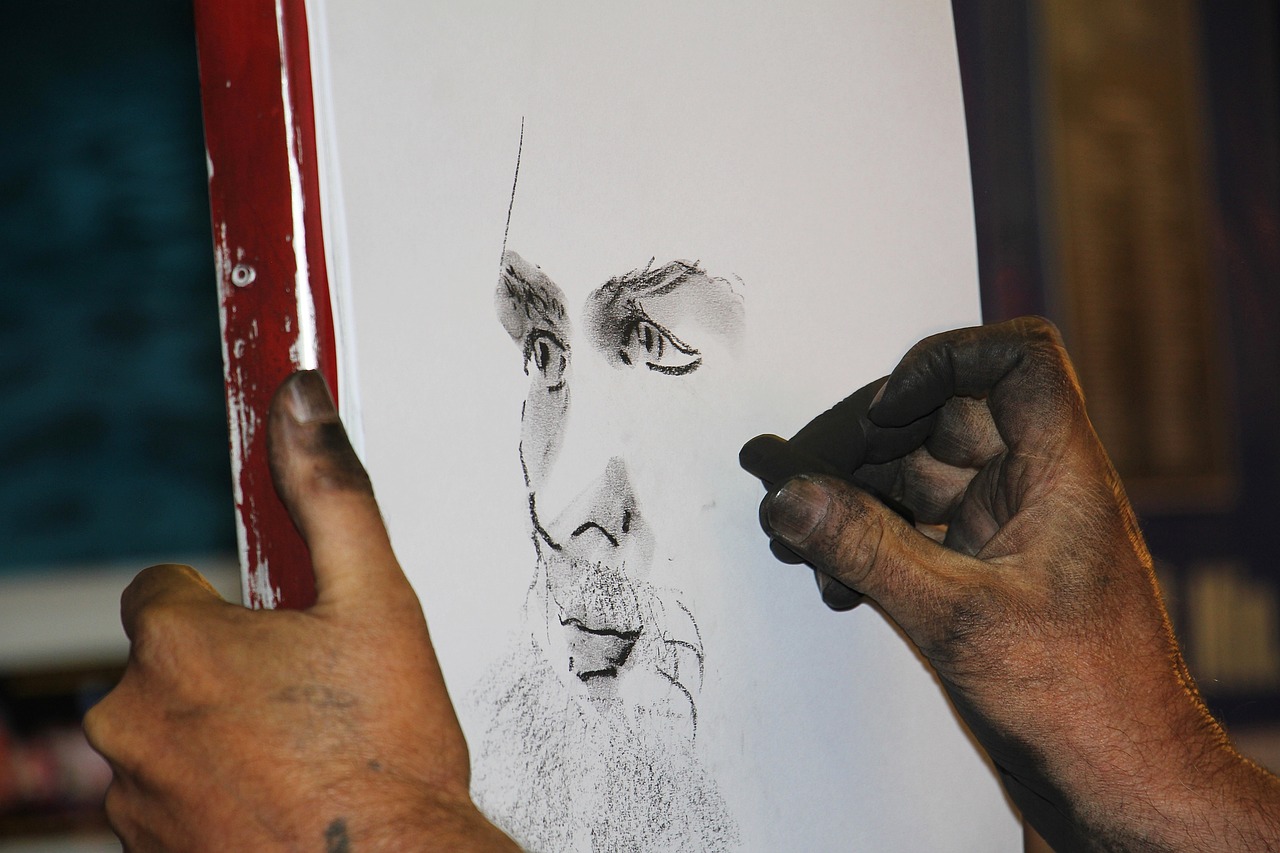
Setting Realistic Goals
Setting realistic goals is like laying the foundation for a sturdy house; without it, everything else can come crashing down. When it comes to cultivating a daily drawing habit, establishing achievable goals is crucial for maintaining motivation and ensuring that you don't feel overwhelmed. Think of your goals as stepping stones on a path that leads to your artistic growth. By breaking down your aspirations into manageable chunks, you can track your progress and stay focused on improvement.
So, how do you go about setting these goals? It's essential to differentiate between short-term and long-term goals. Short-term goals are the immediate targets you want to hit, while long-term goals are the bigger dreams that guide your daily practice. For instance, a short-term goal could be to sketch for just 10 minutes every day, while a long-term goal might involve creating a portfolio that showcases your best work. These goals not only provide clarity but also help you celebrate small victories along the way.
Understanding the difference between short-term and long-term goals can give you a clearer vision of your artistic journey. Short-term goals focus on daily practice and can be anything from committing to a 10-minute sketch to completing a specific drawing challenge. These small, manageable tasks can lead to substantial growth over time. On the other hand, long-term goals are more ambitious and might include:
- Creating a comprehensive portfolio
- Participating in local exhibitions
- Developing a unique artistic style that reflects your personality
These aspirations guide your daily practice and keep your eyes on the prize. Remember, it's not just about the destination; it's about enjoying the journey and the skills you acquire along the way.
When setting short-term goals, think about what you can realistically achieve in the next week or month. Here are a few examples to inspire you:
- Committing to a 10-minute daily sketch
- Completing a drawing challenge, such as "Inktober" or "30 Days of Drawings"
- Experimenting with a new medium, like charcoal or watercolor
These small commitments can lead to significant improvements in your drawing skills, and each completed task serves as a building block for your confidence.
Long-term goals require a bit more reflection and planning. Here are some aspirations that could shape your artistic journey:
- Creating a portfolio that showcases your best works and demonstrates your growth
- Participating in exhibitions to share your art with the world
- Developing a unique artistic style that sets you apart from others
These larger goals can be daunting, but they provide a roadmap for your daily practice. By keeping these aspirations in mind, you'll find motivation even on days when you feel less inspired.
Once you've set your goals, the next step is to create a dedicated drawing space. A well-organized, comfortable, and inspiring environment can significantly enhance your focus and creativity. Whether it's a corner of your room, a cozy nook in a coffee shop, or a studio space, having a designated area for your art can encourage consistency in your daily drawing practice. Think of it as your personal sanctuary where creativity flows freely.
Q1: How do I stay motivated to draw daily?
A1: Staying motivated can be challenging. Start by setting small, achievable goals and gradually increase the difficulty. Celebrate your progress and remember why you love drawing in the first place!
Q2: What if I miss a day of drawing?
A2: Don't be too hard on yourself! Missing a day is normal. Just pick up where you left off and keep moving forward. Consistency is key, but perfection is not the goal.
Q3: How can I find inspiration for my drawings?
A3: Inspiration can come from anywhere! Explore nature, visit art galleries, or even browse social media platforms. Keep a sketchbook handy to jot down ideas whenever they strike.

Short-term vs. Long-term Goals
When it comes to nurturing your daily drawing habit, understanding the difference between short-term and long-term goals is like having a map on a road trip. Short-term goals are your immediate destinations, while long-term goals represent the ultimate journey you wish to embark upon. By distinguishing between the two, you can create a structured roadmap that guides your artistic endeavors.
Short-term goals are typically more achievable and can be completed in a shorter time frame. For example, committing to a 10-minute daily sketch or participating in a weekly drawing challenge can provide instant gratification, keeping your motivation levels high. These small wins accumulate and can lead to significant improvements in your skills. Think of them as the stepping stones that pave the way for your artistic growth.
On the other hand, long-term goals are the grand visions that inspire you to keep going. They might involve mastering specific techniques, developing a unique artistic style, or even creating a comprehensive portfolio to showcase your work. These aspirations fuel your commitment to daily practice, pushing you to strive for excellence over time. It's like planting a seed today and envisioning a beautiful tree in the years to come.
To give you a clearer picture, here's a quick comparison:
| Goal Type | Definition | Examples |
|---|---|---|
| Short-term Goals | Immediate, achievable tasks that contribute to your daily practice. |
|
| Long-term Goals | Aspirations that require time and dedication, shaping your artistic journey. |
|
By setting both short-term and long-term goals, you create a balanced approach to your drawing practice. Short-term goals provide the motivation and excitement needed to keep you engaged, while long-term goals offer a sense of direction and purpose. So, as you embark on your journey to cultivate a daily drawing habit, remember to celebrate those small victories while keeping your eyes on the bigger picture!

Examples of Short-term Goals
When it comes to developing a daily drawing habit, setting short-term goals can be a game changer. These goals are like stepping stones that lead you toward your larger aspirations. They help you stay focused and motivated without feeling overwhelmed. Think of it this way: if you want to climb a mountain, you wouldn't just leap to the top; you'd take it one step at a time. In the world of art, these steps can be as simple as committing to a daily sketch.
One effective short-term goal could be to dedicate just 10 minutes a day to drawing. This may seem insignificant at first, but those 10 minutes can accumulate into hours of practice over weeks and months. Imagine how much your skills could improve with consistent effort! You could also challenge yourself to complete a specific drawing challenge, like the popular “30 Days of Drawing” challenge. This not only gives you a structured approach but also adds an element of fun and excitement to your practice.
Here are a few more examples of achievable short-term goals that can help you on your artistic journey:
- Draw one object from your surroundings each day, whether it’s your coffee mug or a plant.
- Experiment with different mediums, such as charcoal, ink, or digital drawing, for a week.
- Join an online drawing community where you can share your daily sketches and receive feedback.
- Set a timer for 5 minutes and create a quick doodle without overthinking it.
By incorporating these small, manageable tasks into your routine, you will not only build your skills but also cultivate a sense of accomplishment. Each completed drawing, no matter how simple, adds to your artistic repertoire and boosts your confidence. Remember, the key is consistency. As you progress, you can gradually increase the complexity and time spent on your drawings.
Ultimately, short-term goals serve as a powerful motivator. They keep your creativity flowing and remind you that every artist started somewhere. So grab your sketchbook, set your timer, and let your imagination take flight!
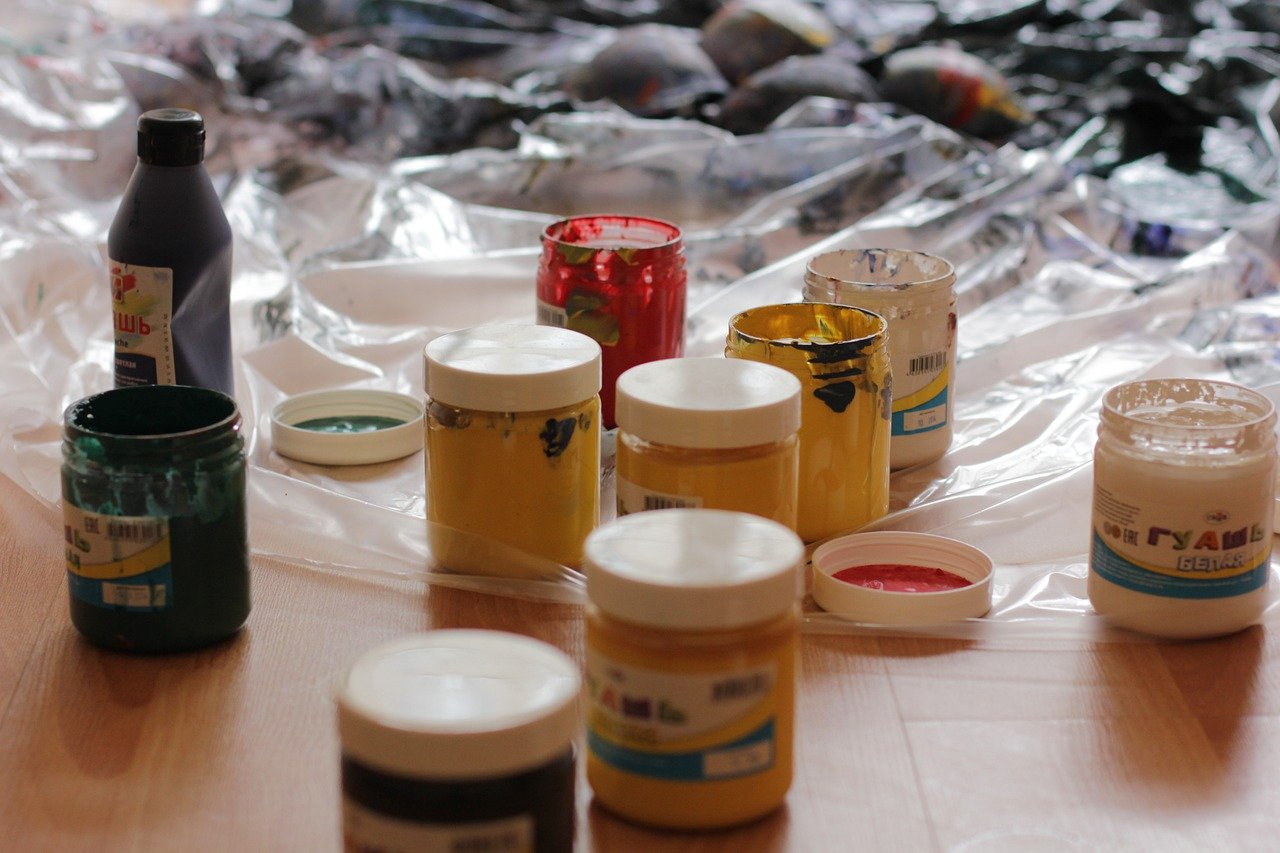
Examples of Long-term Goals
When it comes to cultivating a daily drawing habit, setting long-term goals can be a game changer. These goals act as your guiding stars, helping you navigate through the sometimes tumultuous waters of artistic development. Think of them as your artistic North Star, providing direction and purpose. Here are some compelling examples of long-term goals that can inspire your journey:
First off, consider the idea of creating a portfolio. This isn’t just a collection of your best works; it’s a showcase of your evolution as an artist. Think of it as your personal gallery where you can display your progress and unique style. A well-curated portfolio can open doors to opportunities, whether it be freelance gigs or exhibitions. The process of compiling your portfolio will also encourage you to reflect on your growth over time, which can be incredibly motivating.
Another significant long-term goal could be to participate in exhibitions. Imagine the thrill of seeing your artwork displayed in a gallery! This goal not only pushes you to create more but also challenges you to think about how your work resonates with an audience. Setting your sights on an exhibition can also motivate you to refine your techniques and develop a cohesive body of work. It’s a fantastic way to gain exposure and connect with other artists and art lovers.
Moreover, developing a unique artistic style is a long-term goal that many artists aspire to achieve. This journey can be likened to finding your voice in a crowded room. It requires experimentation, patience, and a willingness to step outside your comfort zone. As you draw daily, you’ll start to notice patterns in your work and preferences in your techniques, gradually shaping your distinctive style. This goal is not just about aesthetics; it’s about self-expression and authenticity.
In addition to these, you might also consider setting goals that involve collaboration with other artists. Whether it's joining a collective, participating in collaborative projects, or even just sharing ideas with fellow creatives, collaboration can enrich your artistic practice. It opens up new perspectives and techniques that can significantly enhance your skills.
Lastly, think about the possibility of teaching your skills to others. Setting a goal to teach art can be incredibly fulfilling. It not only solidifies your own knowledge but also allows you to inspire others. Whether it’s through workshops, online classes, or informal gatherings, sharing your passion can create a ripple effect, encouraging a community of budding artists.
In summary, long-term goals serve as powerful motivators in your artistic journey. They provide a roadmap for your daily practices and remind you of the bigger picture. As you embark on this exciting path, keep these goals in mind, and watch how they transform your approach to drawing!
- How long should my daily drawing sessions be? - Start small with just 10-15 minutes and gradually increase as you build your habit.
- What if I miss a day? - Don’t be too hard on yourself! Just pick up where you left off and keep going.
- Can I draw digitally instead of on paper? - Absolutely! The medium doesn’t matter as long as you’re creating.
- How do I stay motivated? - Set specific goals, track your progress, and celebrate small achievements along the way.
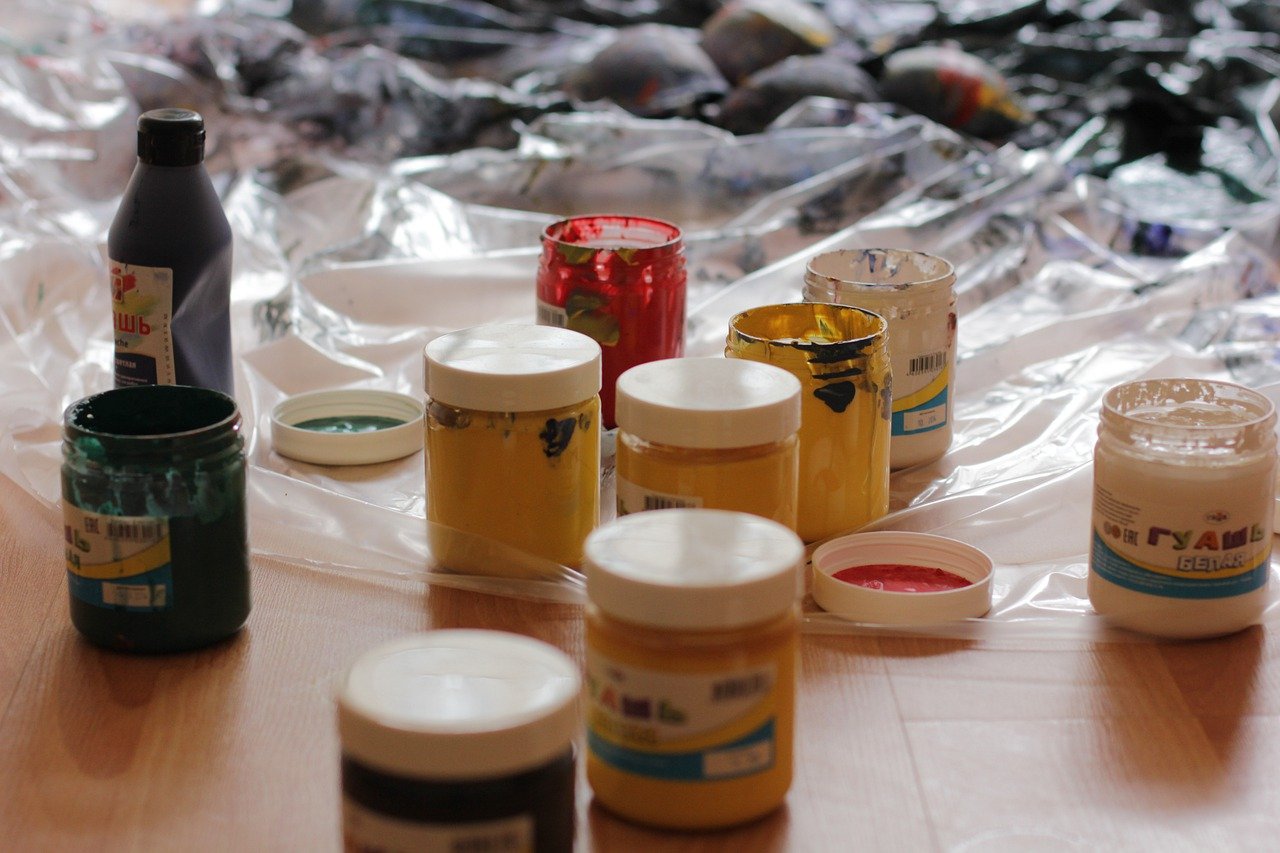
Creating a Dedicated Drawing Space
Creating a dedicated drawing space is like building your own personal sanctuary for creativity. Imagine stepping into a room that instantly sparks your imagination, where every corner is designed to inspire you. A well-organized, comfortable environment can significantly enhance your focus and creativity, making it easier to commit to your daily drawing practice. So, how do you go about setting up this special space? Let’s dive in!
First off, consider the location. Ideally, your drawing space should be somewhere quiet and free from distractions. This could be a cozy corner in your living room, a spare room, or even a balcony if you enjoy the outdoors. The key is to choose a spot that feels right for you. Think of it as your creative cocoon, a place where you can retreat and let your artistic juices flow.
Next, think about the essentials. You don’t need a lot of fancy equipment to start. In fact, having a few basic supplies can keep your space uncluttered and inviting. Here’s a quick list of what you might want to include:
- Drawing materials: Pencils, sketchbooks, erasers, and any other tools you love.
- Comfortable seating: A chair that supports your back can make those long drawing sessions much more enjoyable.
- Good lighting: Natural light is ideal, but if that’s not possible, invest in a bright desk lamp.
- Inspiration board: Pin up images, quotes, or sketches that inspire you to keep your creative energy flowing.
Once you have your essentials, it’s time to personalize your space. Add elements that resonate with you—perhaps some artwork you admire, plants to bring life to the room, or even your favorite music playlist to set the mood. The more you infuse your personality into the space, the more it will feel like a true reflection of you, which can be incredibly motivating.
Another important aspect is organization. A clutter-free workspace can do wonders for your focus. Consider using storage solutions like shelves, drawers, or even decorative boxes to keep your materials tidy. You want to be able to reach for your tools without having to dig through a chaotic mess. Think of it as creating a clear path for your creativity to flow unhindered.
Finally, remember that your drawing space doesn’t have to be permanent. Feel free to rearrange or redecorate as your style and needs evolve. The goal is to create a space that continually inspires you and adapts to your artistic journey. By dedicating a special area for your drawing practice, you’re not just making a commitment to improve your skills; you’re also giving yourself permission to explore and enjoy the process of creating.
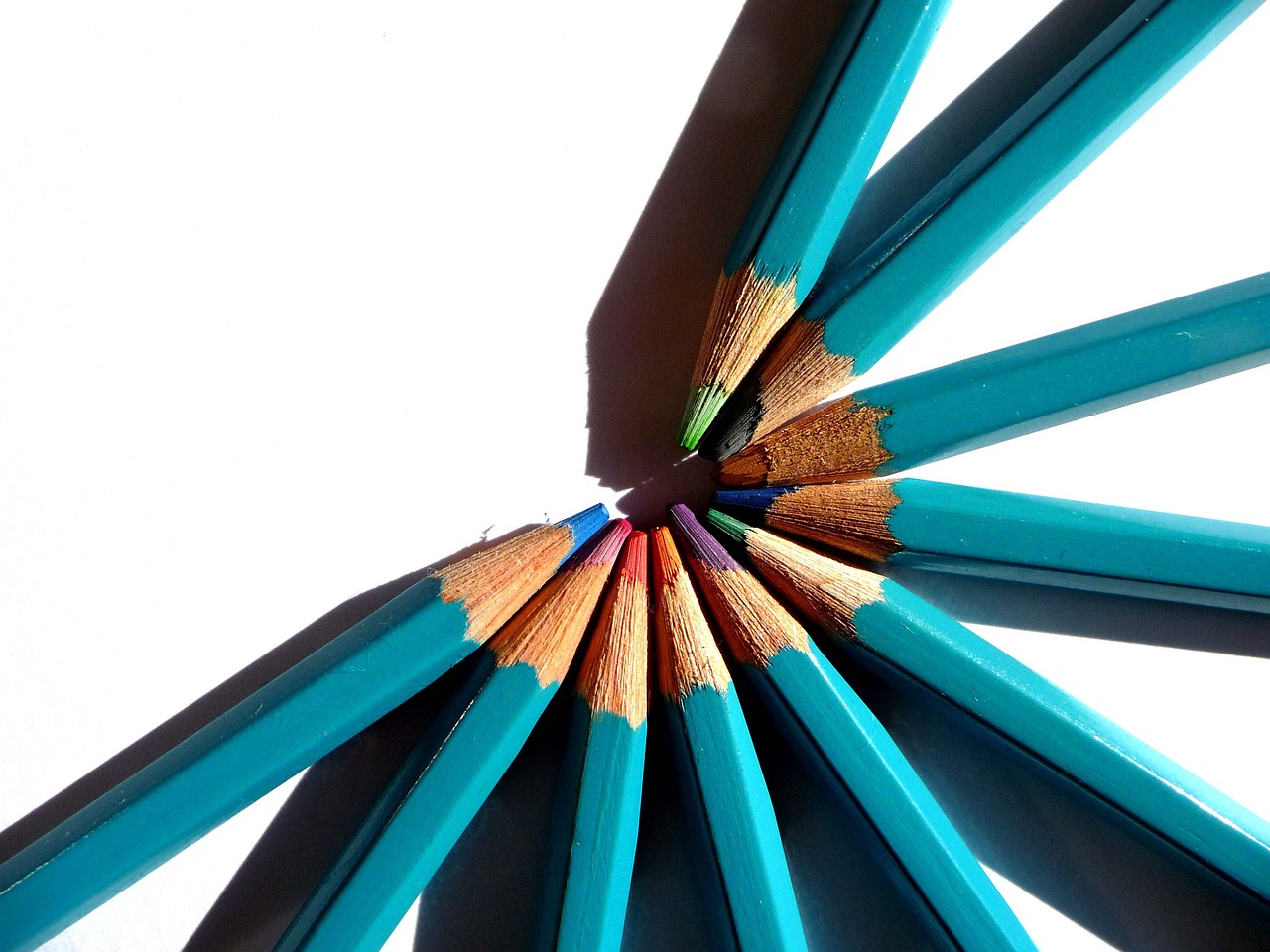
Incorporating Drawing into Your Routine
Integrating drawing into your daily routine is not just about making time for it; it's about transforming it into a habit that feels as natural as brushing your teeth. Think about it: when you schedule drawing into your day, you’re not just setting aside time; you’re creating a space for your creativity to flourish. The key is to find a balance that works for you, whether that means drawing at the crack of dawn, during your lunch break, or winding down in the evening.
One effective strategy is to schedule your drawing sessions. This might sound a bit rigid, but hear me out! By treating your drawing time as an important appointment, you’re more likely to stick to it. You could use a planner, a calendar app, or even sticky notes on your fridge to remind you. Imagine this: you set your alarm for 15 minutes earlier than usual, just to squeeze in a quick sketch before the day starts. Over time, these small increments can lead to significant improvement. You’ll be amazed at how much you can achieve in just a few minutes a day!
Another approach is to embrace spontaneity. Life can be unpredictable, and sometimes the best ideas come when you least expect them. Keep a sketchbook or a digital drawing app handy so you can doodle whenever inspiration strikes. This could be during your commute, while waiting in line, or even during a boring meeting. By staying flexible, you’ll find that drawing becomes a delightful escape from your daily grind.
Finding your optimal drawing time is crucial. Are you a morning person who feels fresh and full of ideas after a good night's sleep? Or do you find that your creativity peaks in the quiet of the night? Experiment with different times of day to see when you feel most inspired. You might be surprised to discover that your best drawings happen when you least expect it!
To keep yourself accountable, consider using reminders and tools. There are countless apps designed to help you track your drawing habits, set goals, and even provide prompts when you're feeling stuck. These tools can act as your personal cheerleaders, nudging you to pick up that pencil or stylus and get started. Plus, they can help you celebrate your progress, making the journey feel even more rewarding.
Lastly, don’t forget to make your drawing practice enjoyable! Incorporate it into activities you already love, like listening to music or watching your favorite show. You could even join online drawing communities or local art groups to share your work and get feedback. Remember, drawing is not just about the end result; it’s about the joy of creating. So, go ahead and make it a fun part of your day!
Q: How long should I draw each day?
A: Start with just 10-15 minutes daily. As you get more comfortable, you can gradually increase your drawing time.
Q: What if I don’t feel inspired to draw?
A: It’s normal to have off days. Try using drawing prompts or doodling without pressure to create something perfect.
Q: Can I combine drawing with other activities?
A: Absolutely! Listening to music, podcasts, or even watching TV can make drawing more enjoyable and help you relax.
Q: How do I stay motivated to draw every day?
A: Set achievable goals, track your progress, and celebrate your milestones. Joining a community can also provide support and inspiration.

Finding Your Optimal Time
When it comes to cultivating a daily drawing habit, one of the most pivotal aspects is figuring out your optimal time for creativity. Just like a chef knows when to sauté or simmer, you too must discover the perfect moments when your imagination flows freely. Are you a morning person, brimming with fresh ideas as the sun rises, or do you find your muse lurking in the quiet of the night? Understanding your personal rhythm can make all the difference in your drawing journey.
To help you pinpoint your ideal drawing times, consider keeping a simple journal for a week. Note down the times you feel most inspired and productive. You might find that:
- Morning Sessions: If you wake up feeling refreshed and energized, mornings might be your best bet. The world is quieter, and you can engage in your art with a clear mind.
- Afternoon Creativity: Perhaps after a fulfilling lunch, you feel a surge of creativity. This could be the perfect time to doodle or sketch.
- Evening Inspiration: If the day winds down and you find yourself lost in thought, nighttime could be when your best ideas emerge. The calmness of the evening can often lead to profound creativity.
After a week of tracking your feelings, you might notice patterns emerging. Create a simple table to summarize your findings:
| Day | Time of Day | Level of Inspiration (1-10) |
|---|---|---|
| Monday | Morning | 8 |
| Tuesday | Afternoon | 6 |
| Wednesday | Evening | 9 |
| Thursday | Morning | 7 |
| Friday | Afternoon | 5 |
| Saturday | Evening | 10 |
| Sunday | Morning | 8 |
By analyzing your insights, you can identify the times when you're most likely to engage deeply with your art. Remember, consistency is key! Once you find your sweet spot, try to block out that time in your calendar, just like you would for an important meeting. This commitment not only builds discipline but also transforms drawing into a cherished part of your daily routine.
Moreover, don’t hesitate to experiment. Life can be unpredictable, and your optimal time might shift based on your daily responsibilities or mood. Keep an open mind and adjust as necessary. The goal is to enjoy the process and let your creativity flourish!
Q: How long should I draw during my optimal time?
A: Start with short sessions, like 15 to 30 minutes. As you grow more comfortable, you can extend your drawing time.
Q: What if I can't find an optimal time?
A: Don't stress! Try drawing at different times throughout the day. You may discover unexpected bursts of creativity.
Q: Should I stick to one time, or can I change it up?
A: It's perfectly fine to change your drawing time based on your schedule and energy levels. Flexibility can enhance your creativity!
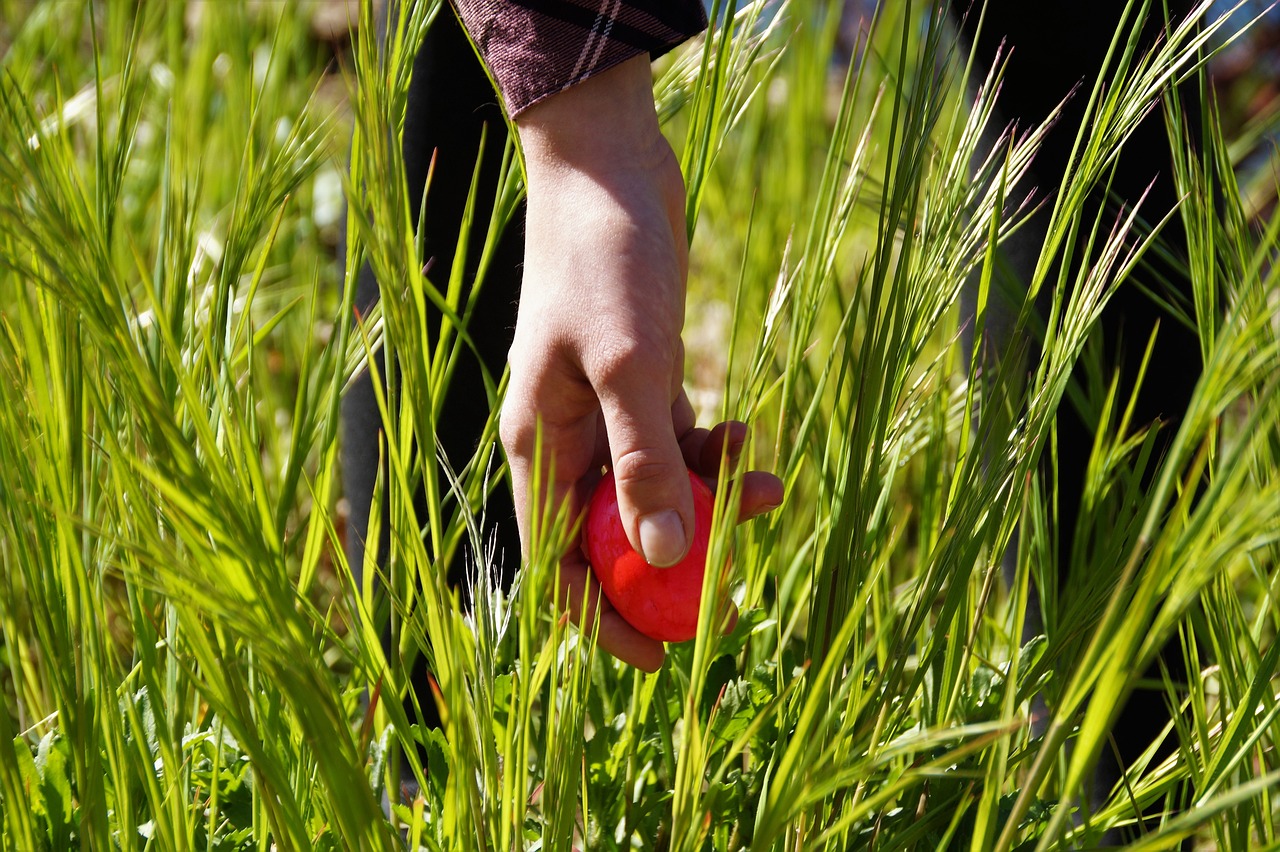
Using Reminders and Tools
In our fast-paced world, it’s incredibly easy to let our daily drawing practice slip through the cracks. But what if I told you that with a few simple reminders and the right tools, you could seamlessly integrate drawing into your life? Think of these reminders as your personal cheerleaders, constantly nudging you towards your creative goals. Whether it's setting an alarm on your phone or using a dedicated app, these tools can transform your drawing habit from a fleeting thought into a non-negotiable part of your day.
One of the most effective ways to stay on track is to establish a routine. You might consider using calendar apps that allow you to set specific times for your drawing sessions. Imagine waking up to a gentle reminder that says, “Time to unleash your creativity!” This can create a sense of accountability. Additionally, you can use drawing prompts that challenge you to think outside the box, keeping your sessions fresh and exciting. These prompts can be found online or in various drawing challenge communities, and they often spark inspiration when you’re feeling a bit stuck.
Another powerful tool is the use of visual reminders. This could be as simple as placing your sketchbook in a visible spot, like on your desk or near your favorite chair. When you see it, the urge to pick it up and draw will be hard to resist! You might also consider creating a vision board that showcases your artistic goals, favorite artworks, or even your previous drawings. This visual representation can serve as a constant source of motivation and remind you of why you started this journey in the first place.
Furthermore, engaging with communities—both online and offline—can be incredibly beneficial. Join social media groups or forums where artists share their daily practices. You can even set up a drawing buddy system where you and a friend hold each other accountable. Sharing your progress and challenges can make the process feel less daunting and more enjoyable. Remember, the journey of becoming a better artist is not a solo expedition; it’s a vibrant community filled with support and encouragement.
Lastly, don't underestimate the power of tracking your progress. Consider maintaining a drawing journal where you record your daily sketches and reflections. This not only helps you see how far you’ve come but also allows you to identify patterns in your creative process. You’ll be amazed at how much you grow when you can visually track your improvements!
| Tool/Method | Purpose |
|---|---|
| Calendar Apps | Set reminders for drawing sessions |
| Drawing Prompts | Inspire creativity and challenge skills |
| Visual Reminders | Keep drawing materials in sight |
| Community Engagement | Find support and accountability |
| Progress Tracking | Monitor growth and identify patterns |
In conclusion, incorporating reminders and tools into your daily drawing practice can significantly enhance your commitment and creativity. By using technology, visual cues, community support, and personal tracking, you can transform drawing from a sporadic activity into a fulfilling daily habit. So, what are you waiting for? Grab your sketchbook, set those reminders, and let your creativity flow!
- How long should I draw each day? - Start with just 10 minutes a day and gradually increase as you feel more comfortable.
- What if I don’t know what to draw? - Use drawing prompts or reference photos to spark your creativity.
- Can I draw digitally? - Absolutely! Whether you prefer traditional or digital mediums, the important thing is to keep practicing.
- How do I stay motivated? - Set realistic goals, track your progress, and connect with other artists to share experiences and encouragement.
Frequently Asked Questions
- How long should I draw each day?
It really depends on your schedule and goals! Starting with just 10 minutes a day can make a big difference. As you get more comfortable, you can gradually increase your drawing time. The key is consistency, not duration!
- What if I don’t know what to draw?
No worries! There are tons of resources for drawing prompts online. You can also draw from your surroundings, sketch your favorite objects, or even doodle your thoughts. Just let your imagination flow!
- Can I improve my skills by drawing only once a week?
While drawing weekly is better than not drawing at all, daily practice significantly boosts your skills. Think of it like exercising; the more regularly you do it, the stronger you become. Try to fit in short sessions throughout the week!
- How can I stay motivated to draw every day?
Setting achievable goals, joining drawing challenges, or sharing your work with friends can keep you motivated. Remember, it’s about enjoying the process as much as the outcome. Celebrate your progress, no matter how small!
- Is it necessary to have a dedicated drawing space?
While it's not strictly necessary, having a dedicated space can really help. It creates an environment that’s conducive to creativity and focus. Just make sure it’s comfortable and inspiring for you!
- What tools do I need to start drawing?
You don’t need fancy tools to start! A simple pencil and paper are perfect for beginners. As you progress, you can explore different mediums like charcoal, ink, or digital tools. Just start with what you have!
- How can I track my progress?
Keeping a sketchbook or a digital portfolio can be a great way to track your progress. Regularly review your older drawings to see how far you’ve come. It’s a fantastic way to stay motivated and recognize your growth!



















